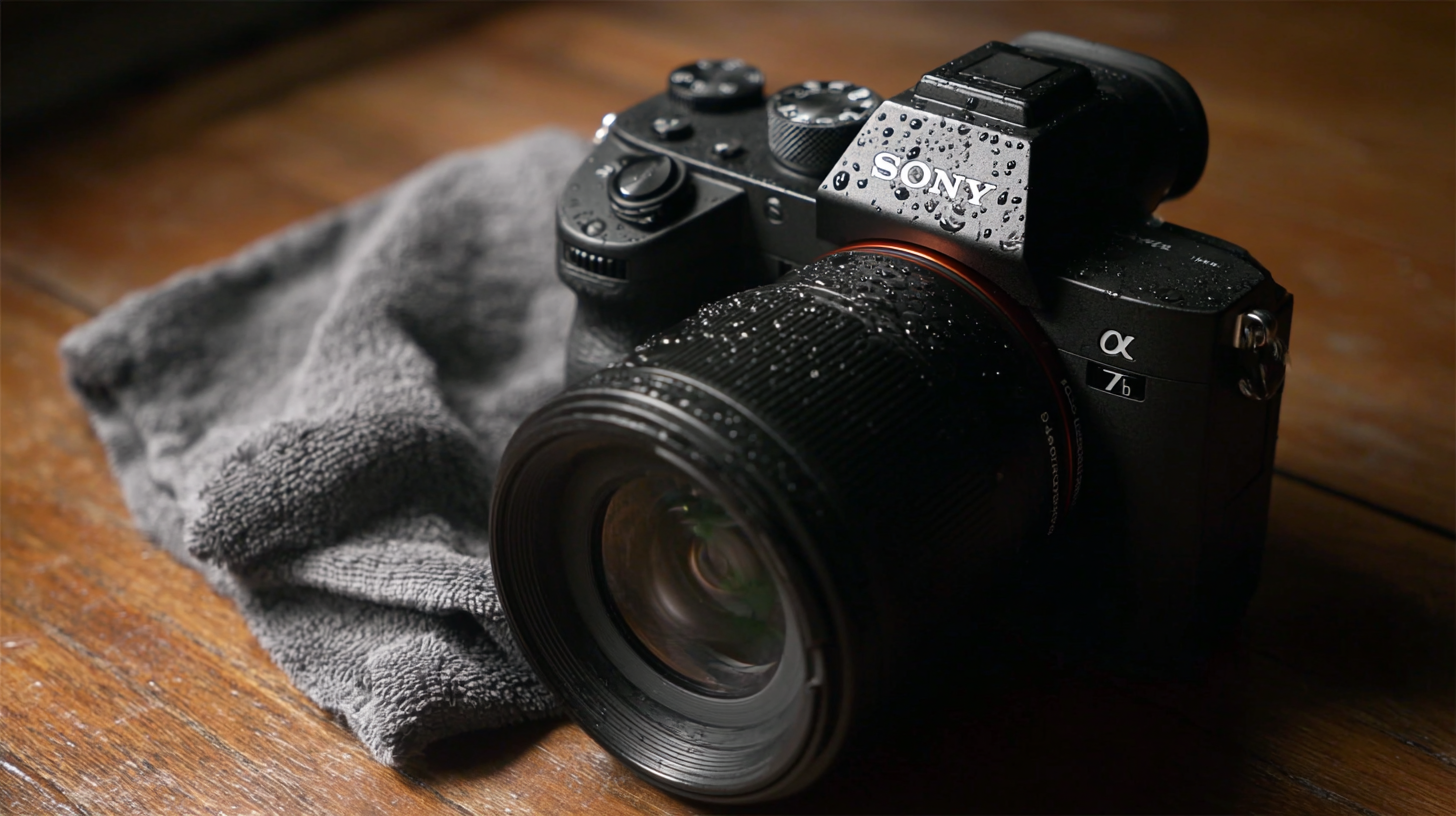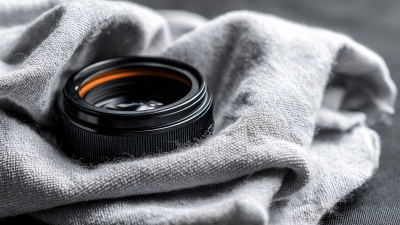When it comes to maintaining the clarity and longevity of your optical devices, the importance of using effective cleaning methods cannot be overstated. One such method involves the use of Lens Cleaning Tissue, specifically designed to tackle smudges and dust without damaging delicate surfaces. In this article, we will explore ten essential tips for utilizing Lens Cleaning Tissue effectively, ensuring that your lenses remain pristine and functional.

From understanding the types of Lens Cleaning Tissue available to mastering the best techniques for application, these tips will enhance your experience and outcomes. By following our guidelines, you can not only extend the life of your lenses but also enjoy optimal visibility through them. Whether you are a photography enthusiast, a glasses wearer, or someone who frequently uses binoculars or microscopes, these practical insights will help you make the most out of your Lens Cleaning Tissue. Let’s dive into the key strategies that can help you achieve crystal-clear optics effortlessly.
When it comes to selecting the right lens cleaning tissue, various factors come into play to ensure optimal results. Firstly, consider the material of the tissue. Opt for lint-free options, as these provide a soft touch that won't scratch the lens while effectively removing smudges and dust. Microfiber tissues are particularly effective, combining softness with durability, making them ideal for a variety of lenses, from eyeglasses to camera lenses.
Another important aspect is the tissue's moisture content. Many products come pre-moistened, which can be convenient but may contain chemicals that aren't suitable for all lens types. It's advisable to check the ingredients and ensure they are compatible with the coatings on your lenses. If you prefer control over the cleaning process, dry tissues paired with a separate lens cleaner can offer a personalized approach, allowing you to use just the right amount of cleaning solution without risking damage.

When selecting lens cleaning products, understanding the significance of anti-static properties is crucial for effective maintenance. Dust and particles can easily cling to surfaces due to static electricity, leading to smudges and diminished visibility. Anti-static lens cleaning tissues are specifically designed to reduce this static buildup, ensuring that your lenses remain clean longer. This feature not only improves the clarity of your vision but also enhances the overall cleanliness of your lenses by preventing dirt from reattaching.
Moreover, using anti-static cleaning tissues contributes to the longevity of your lenses. Traditional cleaning methods can generate static, which may cause fine particles to scratch or damage lens coatings over time. By opting for anti-static products, you are actively protecting your investment, whether they are prescription eyeglasses, camera lenses, or other optical devices. In an age where visibility and clarity are paramount, leveraging the benefits of anti-static properties can make a significant difference in both the usability and durability of your lenses.
When it comes to cleaning lenses, preventing scratches is paramount to maintaining their clarity and longevity. Begin by ensuring that the lens cleaning tissue you use is of high quality, specifically designed for optical surfaces. Avoid using rough or abrasive materials that can easily damage lens coatings. Always check the tissue for any dirt or debris before using it on your lenses, as even a tiny grain of sand can cause significant scratches.
Additionally, it’s essential to use a proper cleaning technique. Instead of wiping in circular motions, start from the center of the lens and work your way outwards, using gentle, straight strokes. This method not only reduces the risk of scratching but also prevents grime from being pushed deeper into the surface. Also, always keep the lens slightly moist with an appropriate lens cleaner; dry wiping can cause more harm than good. By adopting these best practices, you can effectively clean your lenses while safeguarding them from scratches and damage.
The environmental impact of disposable versus reusable lens cleaning tissues is a growing concern as awareness of climate change intensifies. Many disposable lens cleaning tissues are typically made from non-biodegradable materials, ending up in landfills where they contribute to the already pressing issue of waste management. Similar to the problems seen with single-use items like paper cups, these disposable products can lead to microplastic pollution, directly affecting natural ecosystems and wildlife, particularly in our oceans.
On the other hand, reusable lens cleaning tissues present a more sustainable option. By opting for washable and durable alternatives, consumers can significantly reduce their carbon footprint and lessen the demand for single-use products. This shift not only promotes responsible consumption but also aligns with broader sustainability goals. As individuals reflect on their daily choices, the transition from disposable to reusable lens cleaning solutions represents a small yet impactful step toward reducing environmental harm and promoting eco-friendliness in everyday practices.
| Tip Number | Tip Description | Disposable Tissues Environmental Impact (grams CO2e per use) | Reusable Tissues Environmental Impact (grams CO2e per use) | Sustainability Score (out of 10) |
|---|---|---|---|---|
| 1 | Always use a clean tissue to avoid scratching the lens. | 0.5 | 0.2 | 8 |
| 2 | Store tissues in a clean, dry place to maintain their quality. | 0.5 | 0.2 | 9 |
| 3 | Use circular motions to clean the lens effectively. | 0.5 | 0.2 | 8 |
| 4 | Avoid using regular tissues or cloths that can cause damage. | 0.5 | 0.2 | 7 |
| 5 | Dispose of used tissues properly, ideally in recycling bins. | 0.5 | 0.2 | 6 |
| 6 | Consider the benefits of switching to reusable cloths. | 0.5 | 0.1 | 9 |
| 7 | Check for compatibility with the lens coating before use. | 0.5 | 0.2 | 7 |
| 8 | Use as few tissues as necessary to minimize waste. | 0.5 | 0.1 | 10 |
| 9 | Educate others about the environmental impact of disposable tissues. | 0.5 | 0.2 | 8 |
| 10 | Be mindful of other materials that can be used for cleaning. | 0.5 | 0.2 | 7 |
When considering the cost-effectiveness of bulk purchasing lens cleaning supplies, businesses and consumers often overlook the long-term savings and convenience it can offer. By buying in larger quantities, the unit price of each cleaning tissue decreases significantly, leading to reduced overall expenses. This approach not only ensures a consistent supply but also minimizes the frequency of reordering, which can be particularly beneficial for businesses that rely on lens cleaning supplies to maintain a professional appearance and functionality in their products.
 Moreover, the ongoing fluctuations in global supply chains due to external factors such as tariffs and trade restrictions make bulk purchasing an even more appealing strategy. As companies face rising costs and complexities in sourcing materials, stocking up on essential supplies can mitigate the impact of unexpected price hikes and supply chain disruptions. This proactive measure allows businesses to maintain operational efficiency and control over their expenses, leading to smoother operations and improved customer satisfaction. In this evolving landscape, understanding the value of bulk purchasing becomes paramount for savvy consumers and businesses alike.
Moreover, the ongoing fluctuations in global supply chains due to external factors such as tariffs and trade restrictions make bulk purchasing an even more appealing strategy. As companies face rising costs and complexities in sourcing materials, stocking up on essential supplies can mitigate the impact of unexpected price hikes and supply chain disruptions. This proactive measure allows businesses to maintain operational efficiency and control over their expenses, leading to smoother operations and improved customer satisfaction. In this evolving landscape, understanding the value of bulk purchasing becomes paramount for savvy consumers and businesses alike.






